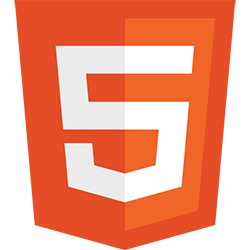Get and Set Environment Variables in Node.js
One of the best ways to use sensitive information in open source repositories without hard-coding the information within publicly available repositories is setting environment variables. Set the environment variables on the server, retrieve them by key within your application.
When using Node.js, you can retrieve environment variables by key from the process.env object:
var mode = process.env.mode; // 'PRODUCTION', for example
var apiKey = process.env.apiKey; // '38294729347392432'
There are time when you may want to set environment variables while you run your node app -- these are set temporarily while the process is still running. A common case is simulating environment variables during testing. You can temporarily set these variables by pegging items onto the process.env object:
process.env.mode = 'TESTING';
// Now app code knows not to do destructive transactions!
Simple enough but worth documenting for future use!
![Page Visibility API]()
One event that's always been lacking within the document is a signal for when the user is looking at a given tab, or another tab. When does the user switch off our site to look at something else? When do they come back?
![From Webcam to Animated GIF: the Secret Behind chat.meatspac.es!]()
My team mate Edna Piranha is not only an awesome hacker; she's also a fantastic philosopher! Communication and online interactions is a subject that has kept her mind busy for a long time, and it has also resulted in a bunch of interesting experimental projects...
![MooTools Equal Heights Plugin: Equalizer]()
Keeping equal heights between elements within the same container can be hugely important for the sake of a pretty page. Unfortunately sometimes keeping columns the same height can't be done with CSS -- you need a little help from your JavaScript friends. Well...now you're...
![Assign Anchor IDs Using MooTools 1.2]()
One of my favorite uses of the MooTools JavaScript library is the SmoothScroll plugin. I use it on my website, my employer's website, and on many customer websites. The best part about the plugin is that it's so easy to implement.
I recently ran...





I believe it’s more common to use
process.env.NODE_ENVinstead ofprocess.env.modeThis is an interesting problem. What if you are using aws or heroku for hosting? You could have your deployment script setup the keys, but you’d need to prompt each time you create a new instance.
I encrypted the keys in a json file with AES 256 and in my run/deploy script it prompts for a password and decrypts it running the rest of the application with env variables. It’s not perfected yet, but this might be a good way to put it on github.
Are these variables just being set via the command line?
Yep!
I have had great success with json-configurator (https://www.npmjs.com/package/json-configurator). Use it with
process.env.NODE_ENVas a input.require('json-configurator')(configJson, process.env.NODE_ENV ).userEndpoint;